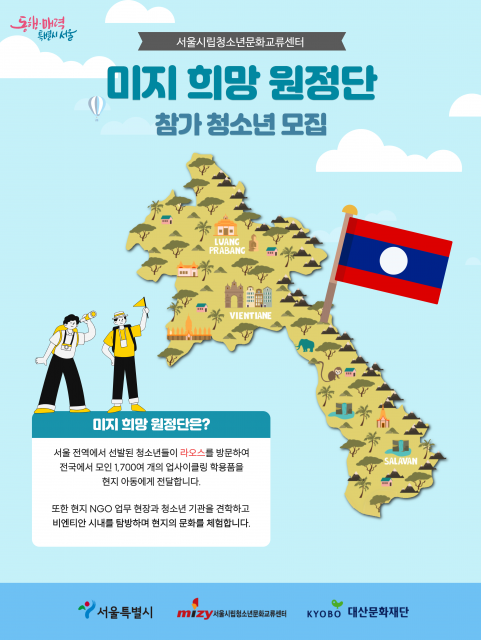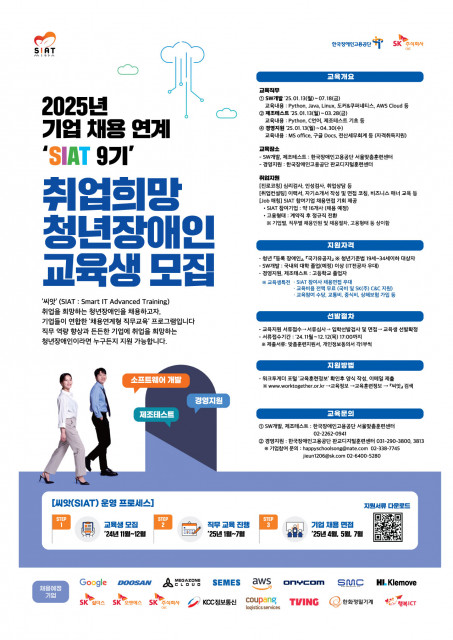BeiGene Highlights Innovative Hematology Portfolio Across B-cell Malig…
SAN MATEO, CALIF.--(Business Wire / Korea Newswire)--BeiGene, Ltd. (NASDAQ: BGNE; HKEX: 06160; SSE: 688235), a global oncology company, today announced it will share new data across a range of B-cell malignancies and assets, including best-in-class Bruton’s tyrosine kinase (BTK) inhibitor BRUKINSA® (zanubrutinib), at the 66th ASH Annual Meeting and Exposition in San Diego, December 7-10. BeiGene has 21 abstracts accepted at ASH 2024, with four selected for oral presentation.
“In the five years since its initial approval, BRUKINSA has become a standard of care for patients facing many B-cell malignancies, and our data featured at ASH demonstrated how long-term follow-up of treatment with BRUKINSA elicited deep and durable responses, including in patients with chronic lymphocytic leukemia and Waldenström’s macroglobulinemia,” said Mehrdad Mobasher, M.D., M.P.H., Chief Medical Officer, Hematology at BeiGene. “BRUKINSA is just the starting point - pipeline data for our BTK degrader BGB-16673 and BCL2 inhibitor sonrotoclax showcase our continued leadership across the hematology landscape and our commitment to bringing innovative medicines to as many people with cancer as possible.”
Presentations Highlight Sustained Progression-Free Survival and Deepening Durable Responses for Patients Treated with BRUKINSA in Treatment-Naïve and Relapsed/Refractory (R/R) Settings
· Five-year follow-up results from Cohort 1 of the Phase 3 SEQUOIA study showed sustained progression-free survival (PFS) benefit with BRUKINSA in patients with treatment-naïve chronic lymphocytic leukemia/small lymphocytic lymphoma (CLL/SLL), with no new safety signals observed.
· Results from the LTE (long-term extension rollover) study of patients with treatment-naïve and R/R CLL also showed that treatment with BRUKINSA as a single agent or as an investigational treatment in combination with obinutuzumab achieved high overall and complete response rates. With a median follow-up of up to 6.5 years, the responses were sustained, and no new safety signals were observed.
· Results from an LTE study of patients with Waldenström macroglobulinemia (WM) from the Phase 3 ASPEN study, with a median follow-up of up to 5.8 years, demonstrated that treatment with BRUKINSA monotherapy remained durable and the safety/tolerability profile remained favorable.
· Data from a Phase 2 study showed patients with prior intolerance to acalabrutinib were able to safely and effectively switch to BRUKINSA, with the majority of patients not experiencing recurrence of prior acalabrutinib-intolerance events while maintaining or deepening responses.
Pipeline Data Show Early Safety and Efficacy Across Multiple B-cell Malignancies
· First-in-human Phase 1/2 CaDAnCe-101 presentations (two oral, one poster) highlighted generally manageable safety and promising efficacy results for BTK degrader, BGB-16673, in patients with R/R CLL/SLL, WM, and R/R indolent non-Hodgkin’s lymphoma. BGB-16673, which induces BTK degradation, is the first and most advanced asset from BeiGene’s chimeric degradation activation compound (CDAC) platform.
· Oral presentation of the BGB-11417-101 Phase 1 study demonstrated B-cell lymphoma 2 (BCL2) inhibitor sonrotoclax in combination with BRUKINSA continued to show promising efficacy and was generally well-tolerated in patients with treatment-naïve CLL/SLL; this combination is being evaluated in the Phase 3 CELESTIAL-TNCLL study (NCT06073821).
BeiGene Presentations During ASH 2024
(To view the table, please visit https://www.businesswire.com/news/home/20241105876184/en)
About BRUKINSA® (zanubrutinib)
BRUKINSA is an orally available, small molecule inhibitor of Bruton’s tyrosine kinase (BTK) designed to deliver complete and sustained inhibition of the BTK protein by optimizing bioavailability, half-life, and selectivity. With differentiated pharmacokinetics compared with other approved BTK inhibitors, BRUKINSA has been demonstrated to inhibit the proliferation of malignant B cells within a number of disease-relevant tissues.
BRUKINSA has the broadest label globally of any BTK inhibitor and is the only BTK inhibitor to provide the flexibility of once or twice daily dosing. The global BRUKINSA clinical development program includes about 6,000 patients enrolled in 30 countries and regions across more than 35 trials. BRUKINSA is approved in more than 70 markets, and more than 100,000 patients have been treated globally.
U.S. Indications and Important Safety Information for BRUKINSA (zanubrutinib)
INDICATIONS
BRUKINSA is a kinase inhibitor indicated for the treatment of adult patients with:
· Chronic lymphocytic leukemia (CLL) or small lymphocytic lymphoma (SLL).
· Waldenström’s macroglobulinemia (WM).
· Mantle cell lymphoma (MCL) who have received at least one prior therapy.
· Relapsed or refractory marginal zone lymphoma (MZL) who have received at least one anti-CD20-based regimen.
· Relapsed or refractory follicular lymphoma (FL), in combination with obinutuzumab, after two or more lines of systemic therapy.
The MCL, MZL and FL indications are approved under accelerated approval based on overall response rate and durability of response. Continued approval for these indications may be contingent upon verification and description of clinical benefit in confirmatory trials.
IMPORTANT SAFETY INFORMATION
Warnings and Precautions
Hemorrhage
Fatal and serious hemorrhage has occurred in patients with hematological malignancies treated with BRUKINSA. Grade 3 or higher hemorrhage including intracranial and gastrointestinal hemorrhage, hematuria, and hemothorax was reported in 3.8% of patients treated with BRUKINSA in clinical trials, with fatalities occurring in 0.2% of patients. Bleeding of any grade, excluding purpura and petechiae, occurred in 32% of patients.
Bleeding has occurred in patients with and without concomitant antiplatelet or anticoagulation therapy. Coadministration of BRUKINSA with antiplatelet or anticoagulant medications may further increase the risk of hemorrhage.
Monitor for signs and symptoms of bleeding. Discontinue BRUKINSA if intracranial hemorrhage of any grade occurs. Consider the benefit-risk of withholding BRUKINSA for 3-7 days before and after surgery depending upon the type of surgery and the risk of bleeding.
Infections
Fatal and serious infections (including bacterial, viral, or fungal infections) and opportunistic infections have occurred in patients with hematological malignancies treated with BRUKINSA. Grade 3 or higher infections occurred in 26% of patients, most commonly pneumonia (7.9%), with fatal infections occurring in 3.2% of patients. Infections due to hepatitis B virus (HBV) reactivation have occurred.
Consider prophylaxis for herpes simplex virus, pneumocystis jirovecii pneumonia, and other infections according to standard of care in patients who are at increased risk for infections. Monitor and evaluate patients for fever or other signs and symptoms of infection and treat appropriately.
Cytopenias
Grade 3 or 4 cytopenias, including neutropenia (21%), thrombocytopenia (8%) and anemia (8%) based on laboratory measurements, developed in patients treated with BRUKINSA. Grade 4 neutropenia occurred in 10% of patients, and Grade 4 thrombocytopenia occurred in 2.5% of patients.
Monitor complete blood counts regularly during treatment and interrupt treatment, reduce the dose, or discontinue treatment as warranted. Treat using growth factor or transfusions, as needed.
Second Primary Malignancies
Second primary malignancies, including non-skin carcinoma, have occurred in 14% of patients treated with BRUKINSA. The most frequent second primary malignancy was non-melanoma skin cancers (8%), followed by other solid tumors in 7% of the patients (including melanoma in 1% of patients) and hematologic malignancies (0.7%). Advise patients to use sun protection and monitor patients for the development of second primary malignancies.
Cardiac Arrhythmias
Serious cardiac arrhythmias have occurred in patients treated with BRUKINSA. Atrial fibrillation and atrial flutter were reported in 4.4% patients treated with BRUKINSA, including Grade 3 or higher cases in 1.9% of patients. Patients with cardiac risk factors, hypertension, and acute infections may be at increased risk. Grade 3 or higher ventricular arrhythmias were reported in 0.3% of patients.
Monitor for signs and symptoms of cardiac arrhythmias (e.g., palpitations, dizziness, syncope, dyspnea, chest discomfort), manage appropriately, and consider the risks and benefits of continued BRUKINSA treatment.
Hepatotoxicity, Including Drug-Induced Liver Injury
Hepatotoxicity, including severe, life-threatening, and potentially fatal cases of drug-induced liver injury (DILI), has occurred in patients treated with Bruton tyrosine kinase inhibitors, including BRUKINSA.
Evaluate bilirubin and transaminases at baseline and throughout treatment with BRUKINSA. For patients who develop abnormal liver tests after BRUKINSA, monitor more frequently for liver test abnormalities and clinical signs and symptoms of hepatic toxicity. If DILI is suspected, withhold BRUKINSA. Upon confirmation of DILI, discontinue BRUKINSA.
Embryo-Fetal Toxicity
Based on findings in animals, BRUKINSA can cause fetal harm when administered to a pregnant woman. Administration of zanubrutinib to pregnant rats during the period of organogenesis caused embryo-fetal toxicity, including malformations at exposures that were 5 times higher than those reported in patients at the recommended dose of 160 mg twice daily. Advise women to avoid becoming pregnant while taking BRUKINSA and for 1 week after the last dose. Advise men to avoid fathering a child during treatment and for 1 week after the last dose. If this drug is used during pregnancy, or if the patient becomes pregnant while taking this drug, the patient should be apprised of the potential hazard to a fetus.
Adverse Reactions
The most common adverse reactions (≥30%), including laboratory abnormalities, in patients who received BRUKINSA (N=1729) are decreased neutrophil count (51%), decreased platelet count (41%), upper respiratory tract infection (38%), hemorrhage (32%), and musculoskeletal pain (31%).
Drug Interactions
CYP3A Inhibitors: When BRUKINSA is co-administered with a strong CYP3A inhibitor, reduce BRUKINSA dose to 80 mg once daily. For coadministration with a moderate CYP3A inhibitor, reduce BRUKINSA dose to 80 mg twice daily.
CYP3A Inducers: Avoid coadministration with strong or moderate CYP3A inducers. Dose adjustment may be recommended with moderate CYP3A inducers.
Specific Populations
Hepatic Impairment: The recommended dose of BRUKINSA for patients with severe hepatic impairment is 80 mg orally twice daily.
Please see full U.S. Prescribing Information including U.S. Patient Information.
About BeiGene
BeiGene is a global oncology company that is discovering and developing innovative treatments that are more affordable and accessible to cancer patients worldwide. With a broad portfolio, we are expediting development of our diverse pipeline of novel therapeutics through our internal capabilities and collaborations. We are committed to radically improving access to medicines for far more patients who need them. Our growing global team of more than 10,000 colleagues spans five continents. To learn more about BeiGene, please visit www.beigene.com and follow us on LinkedIn, X (formerly known as Twitter), Facebook and Instagram.
Forward-Looking Statements
This press release contains forward-looking statements within the meaning of the Private Securities Litigation Reform Act of 1995 and other federal securities laws, including statements regarding BeiGene’s continued leadership in hematology and commitment to bringing innovative medicines to as many people with cancer as possible; the safety and efficacy of BeiGene’s pipeline assets; and BeiGene’s plans, commitments, aspirations, and goals under the heading “About BeiGene.” Actual results may differ materially from those indicated in the forward-looking statements as a result of various important factors, including BeiGene’s ability to demonstrate the efficacy and safety of its drug candidates; the clinical results for its drug candidates, which may not support further development or marketing approval; actions of regulatory agencies, which may affect the initiation, timing, and progress of clinical trials and marketing approval; BeiGene’s ability to achieve commercial success for its marketed medicines and drug candidates, if approved; BeiGene’s ability to obtain and maintain protection of intellectual property for its medicines and technology; BeiGene’s reliance on third parties to conduct drug development, manufacturing, commercialization, and other services; BeiGene’s limited experience in obtaining regulatory approvals and commercializing pharmaceutical products; BeiGene’s ability to obtain additional funding for operations and to complete the development of its drug candidates and achieve and maintain profitability; and those risks more fully discussed in the section entitled “Risk Factors” in BeiGene’s most recent quarterly report on Form 10-Q, as well as discussions of potential risks, uncertainties, and other important factors in BeiGene’s subsequent filings with the U.S. Securities and Exchange Commission. All information in this press release is as of the date of this press release, and BeiGene undertakes no duty to update such information unless required by law.
View source version on businesswire.com: https://www.businesswire.com/news/home/20241105876184/en/
Website: https://www.beigene.com/en-us?loc=us








